|
|
|
Sort Order |
|
|
|
Items / Page
|
|
|
|
|
|
|
| Srl | Item |
| 1 |
ID:
090967
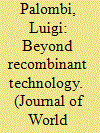

|
|
|
|
|
| Publication |
2009.
|
| Summary/Abstract |
Even though it is not yet clear as a matter of law that isolated biological materials are indeed patentable subject matter, patents over such materials continue to be granted throughout the world. Recently, Craig Venter, the man who wanted to patent the human genome, made history again. This time he has built a synthetic bacterium from the ground up-in a laboratory. The bacterium, Mycoplasma genitalium, is a naturally occurring thing. It is the smallest known bacterium consisting of 582,970 nucleotides. Venter's version of this bacterium is identical, except that he made it. Does this make it an invention? Indeed, Venter has in mind to use this synthetic bacterium, and other synthetic biological materials, as plasmids within which to insert genetic material that is foreign to that organism. The idea is to use these plasmids to manufacture other biological materials. It is a repeat of Cohen and Boyer's idea, which they also patented, but this time the plasmid itself will be a human construct. Is the patent system ready for Venter and his "invention"?
|
|
|
|
|
|
|
|
|
|
|
|
|
|
|
|
| 2 |
ID:
087168


|
|
|
|
|
| Publication |
2009.
|
| Summary/Abstract |
Shadowing the emergence of new technologies intended for peaceful purposes are unprecedented threats to international security. For example, among the lofe sciences technologies and research areas with the potential for dual use (that is, for weaponization) are synthetic biology and nanotoxicology.
|
|
|
|
|
|
|
|
|
|
|
|
|
|
|
|
| 3 |
ID:
124638
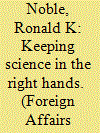

|
|
|
|
|
| Publication |
2013.
|
| Summary/Abstract |
Ongoing research and discoveries in the life sciences -- the latest and most promising involving synthetic biology -- have led to extraordinary advances that will benefit society. But criminals and terrorists could manipulate such advances to disrupt public safety and national security. Since its founding in 1923, Interpol has learned that the most effective way to keep up with a constantly changing world is by engaging law enforcement and consulting experts in its 190 member countries. Effective solutions to new global security threats require the exchange of information and intelligence. As the methods criminals employ have developed, so, too, has Interpol's capacity for deploying new strategies and offering assistance to stop them.
|
|
|
|
|
|
|
|
|
|
|
|
|
|
|
|
| 4 |
ID:
165213
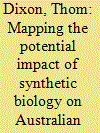

|
|
|
|
|
| Summary/Abstract |
Synthetic biology is an emerging technology that will impact on the future security and prosperity of Australia. As a discrete policy area synthetic biology has not been explored in relation to Australian foreign policy. To begin this process an understanding of Australia’s genetic endowment, Australia’s agricultural endowment and those security concerns novel to synthetic biology need to be developed. The convergence of the biological sciences and the information sciences is creating novel security concerns that impact on Australian sovereignty, both mainland and the Antarctic Territories, plant and animal health, and defence medical infrastructure. These concerns cross many traditional disciplinary and policy boundaries, an awareness of this is required and a nascent national practitioner community can develop this further. Drawing from work conducted by the US and UK synthetic biology practitioner communities, this article lays out the unique touch points synthetic biology has on Australian foreign policy.
|
|
|
|
|
|
|
|
|
|
|
|
|
|
|
|
| 5 |
ID:
160917
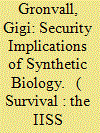

|
|
|
|
|
| Summary/Abstract |
Advances in synthetic biology hold great promise, but to minimise security threats, national and international regulation will need to keep pace.
|
|
|
|
|
|
|
|
|
|
|
|
|
|
|
|
| 6 |
ID:
182964
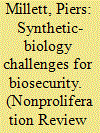

|
|
|
|
|
| Summary/Abstract |
Although synthetic biology and biological engineering are often portrayed as emerging disciplines, there is over a decade of experience in their interactions with biosecurity. The International Genetically Engineered Machine competition (iGEM) brings together nearly 6000 students on multidisciplinary teams to engineer biology following synthetic biology’s “design, build, test, and learn” cycle. During its fifteen-year existence, iGEM has been affected by biosecurity and in turn has affected it. This article describes four specific case studies at iGEM, highlighting their implications for biosecurity, and proposes ways to improve relevant biosecurity procedures and practices. It showcases how embracing engineering approaches and principles can help to structure efforts to strengthen biosecurity.
|
|
|
|
|
|
|
|
|
|
|
|
|
|
|
|
| 7 |
ID:
182972


|
|
|
|
|
| Summary/Abstract |
This article explores emerging science and technology advances relevant to the 1972 Biological and Toxin Weapons Convention (BWC), and existing and needed frameworks for their identification, risk assessment, and evaluation of benefit. Threats from biological weapons continue to be a major concern as state and non-state actors have developed, used, or expressed interest in these types of weapons. International nonproliferation instruments and related efforts in health security, specifically the 2005 International Health Regulations and the 2014 Global Health Security Agenda, recognize deliberate biological incidents as one of three threats to address (the others being natural and accidental biological events). To date, these instruments and their subsequent regional and national-level implementation efforts focus primarily on pathogens and toxins as biological threat agents. Unlike the other instruments, the BWC focuses on preventing the diversion of peaceful and prophylactic uses of biology to the development, production, stockpiling, or dissemination and delivery of biological weapons. Accordingly, the BWC recognizes the importance of scientific and technological advances in enabling different actors to develop or disseminate biological agents, altering the risk profile of deliberate biological threats. To identify and discuss advances that may affect implementation of the BWC, the US National Academy of Sciences and the BWC Implementation Support Unit conducted or sponsored several activities to explore science and technologies that may be most relevant to the BWC. However, the biotechnology landscape continues to change drastically, expanding the focus of security risks beyond pathogens and toxins to include other biological data and materials, such as synthetic organisms. Factors promoting the development of biotechnology capabilities include new funders and funding models, practitioners from other disciplines leveraging the tools of biology, new nations investing in the biological sciences, and research leveraging advances in engineering, computer, data, materials, physical, and chemical sciences. These advances may reveal new capabilities that significantly alter biological nonproliferation efforts, including both new security threats and benefits to society.
|
|
|
|
|
|
|
|
|
|
|
|
|
|
|
|
|
|
|
|
|